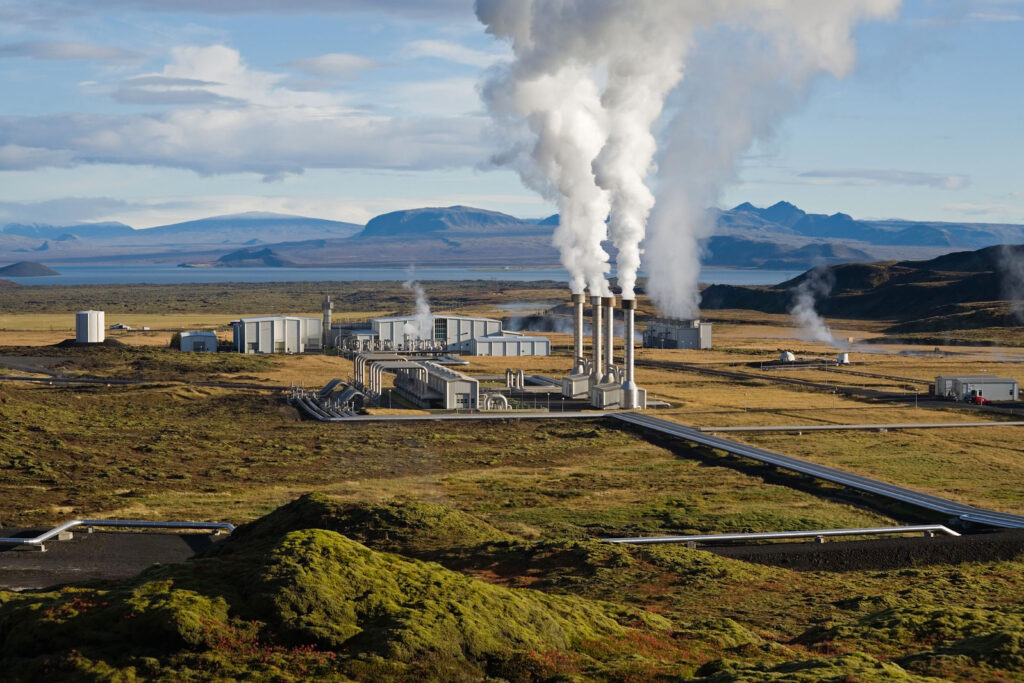Organizations:
People:
Topics:
Tapping the earth: Nunavut weighs geothermal options
Leah GellerSeptember 7, 2022
Nunavut is launching its first-ever study to determine the potential for geothermal energy as an alternative source of electricity.
At present, all electricity in Nunavut is produced using diesel fuel. Each of Nunavut’s 25 communities has its own power plant, which uses diesel brought in during the summer and stored in local tank facilities. The diesel is then used to power local generator sets that convert energy into electricity throughout the year.
While diesel is both reliable and cost-effective, it can have serious consequences for the environment and human health. Exposure to diesel exhaust can lead to asthma and respiratory illnesses, and can worsen existing heart and lung disease. Diesel emissions also contribute to climate change and air pollution, and can result in harmful fuel spills.
Aware of these challenges, the Qulliq Energy Corporation (QEC), Nunavut’s sole power utility generator and distributor, is exploring alternative, renewable energy sources, including geothermal, which uses heat generated in the earth’s crust.
“The north is more impacted by climate change than most areas in the world, so everybody’s interested in doing their part,” said Bill Nippard, Acting Vice-President of QEC. “We’re launching this study so we can understand how geothermal might be used as an energy source to turn turbines to generate electricity. We also want to look at how we might be able to store any excess heat in the ground and then potentially draw it out to heat buildings around town.”
This August, the federal government announced $1.2 million over three years to support the project. Funding comes from the Canadian Northern Economic Development Agency's Inclusive Diversification and Economic Advancement in the North (IDEANorth) program, which makes investments to help integrate Northerners into the country's innovation economy.
The study will assess the potential of both geothermal energy and the feasibility of waste energy storage in Baker Lake. It will also conduct geophysical surveys to assess deep sub-surface conditions in Baker Lake, Cambridge Bay and Resolute Bay, with the ultimate goal of a full assessment of Nunavut's geothermal potential.
Looking for alternatives
Nunavut is not alone in using diesel as an energy source — or in exploring alternatives. Communities in most Arctic countries are small and remote, and rarely connected to a larger energy grid. They must supply their energy locally and the vast majority (80 percent) use fossil fuels such as diesel, coal, or natural gas to do so. Iceland and Norway are the exceptions in the Arctic, with almost 100 percent renewable energy sources.
“This is not just a Nunavut issue,” explained Nippard. “We’re seeing the same challenges in other northern communities. You need an energy source that is cost-effective and always available on-demand.”
Geothermal energy is more reliable and sustainable than solar or wind, and depends on locally occurring resources, independent of outside fuel supplies and their fluctuating prices. On the other hand, tapping into geothermal energy requires high up-front costs and its availability is completely location specific. Geothermal plants have to be built in a location where the geothermal energy is readily accessible.
“In a place like Iceland, they have a very well-defined geology that offers widely available geothermal energy,” says Nippard. “But we don’t know yet how deep we’ll have to go and what we’re going to find.”
Indigenous communities in Nunavut are supporting QEC’s study, providing permits and access to communities for this work. “They are very interested in moving away from diesel energy,” explains Nippard. “And the ability to store heat energy in the ground could potentially open this technology up to all 25 communities here.”
As part of QEC’s commitment to diesel alternatives, they have received Ministerial Interim Approval to conduct technical feasibility studies for an Independent Power Producer (IPP) program in Inuit-owned organizations and Nunavut hamlets. This new initiative allows producers outside of the utility to generate electrical power from renewable energy systems and sell it directly to QEC.
“The IPP program provides an opportunity for Indigenous groups and communities to build windmill and solar farms, and supply the grid with clean energy that offsets the use of diesel,” says Nippard. “We’re very excited about the program.”
QEC is also developing a smaller-scale program for individual customers who might want to invest in renewables such as solar panels for their own homes. If, for example, they generate more electricity than they need during the summer, they can use those credits to pay for electricity in the fall and winter.
“We work in a unique environment, where all of our communities are isolated,” adds Nippard. “Having our utility 100 percent diesel is not where we want to be. QEC will continue to move towards more renewable and alternative energies — not to completely replace diesel, but at least decrease our dependence on it. We’re hopeful our geothermal feasibility study will produce information that can help take us to the next stage.”
R$
Events For Leaders in
Science, Tech, Innovation, and Policy
Discuss and learn from those in the know at our virtual and in-person events.
See Upcoming Events
You have 1 free article remaining.
Don't miss out - start your free trial today.
Start your FREE trial Already a member? Log in
By using this website, you agree to our use of cookies. We use cookies to provide you with a great experience and to help our website run effectively in accordance with our Privacy Policy and Terms of Service.





